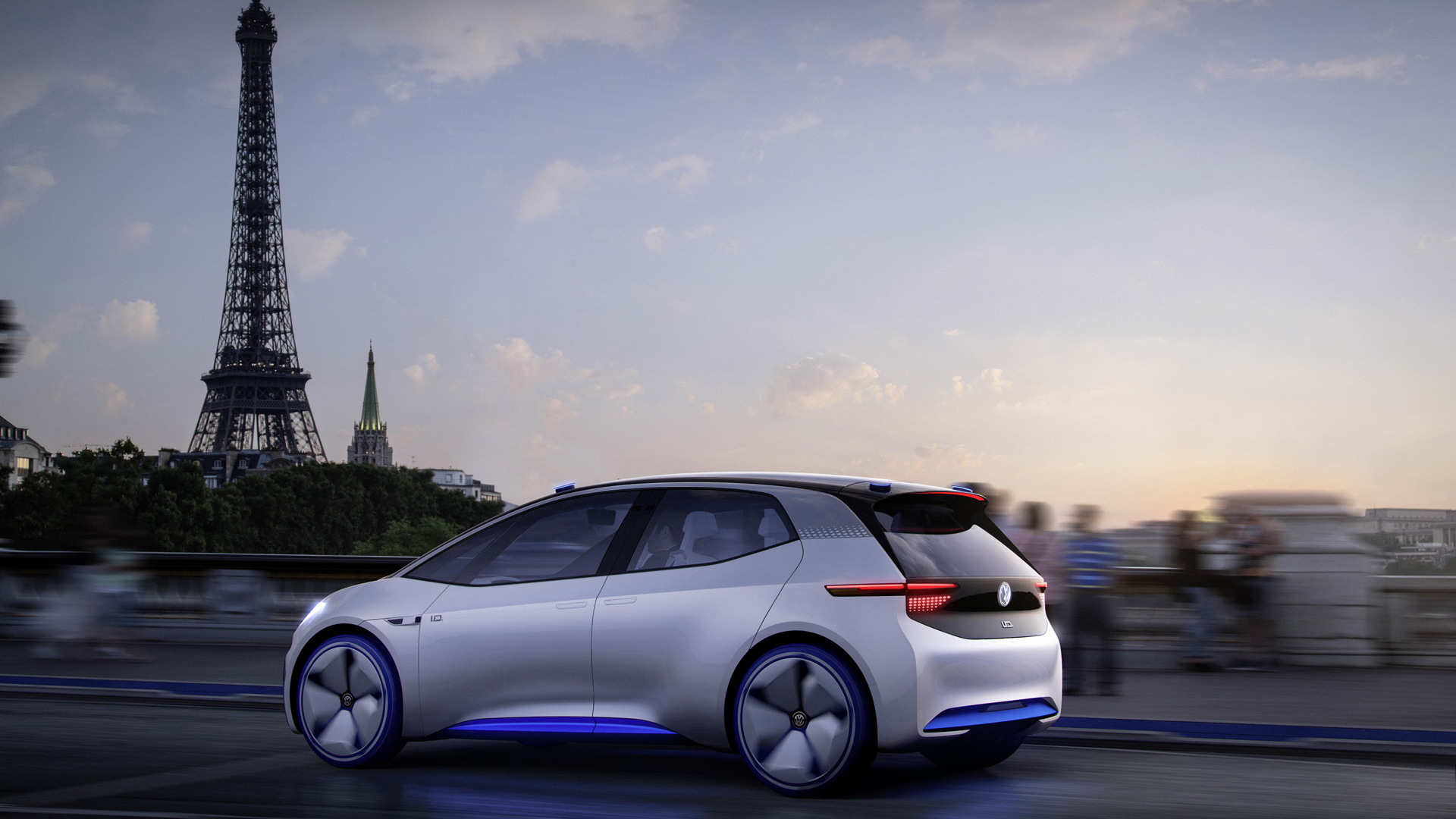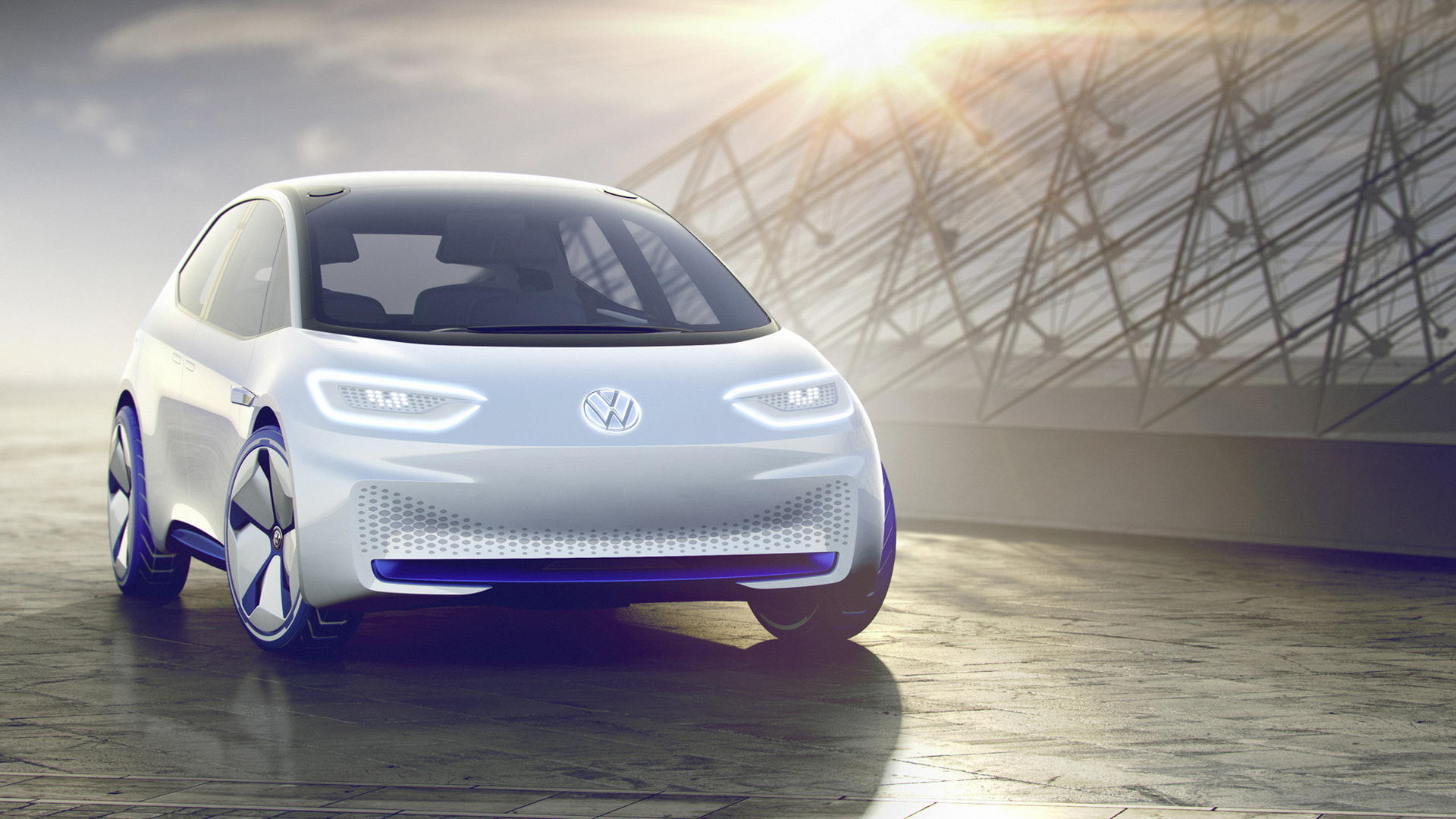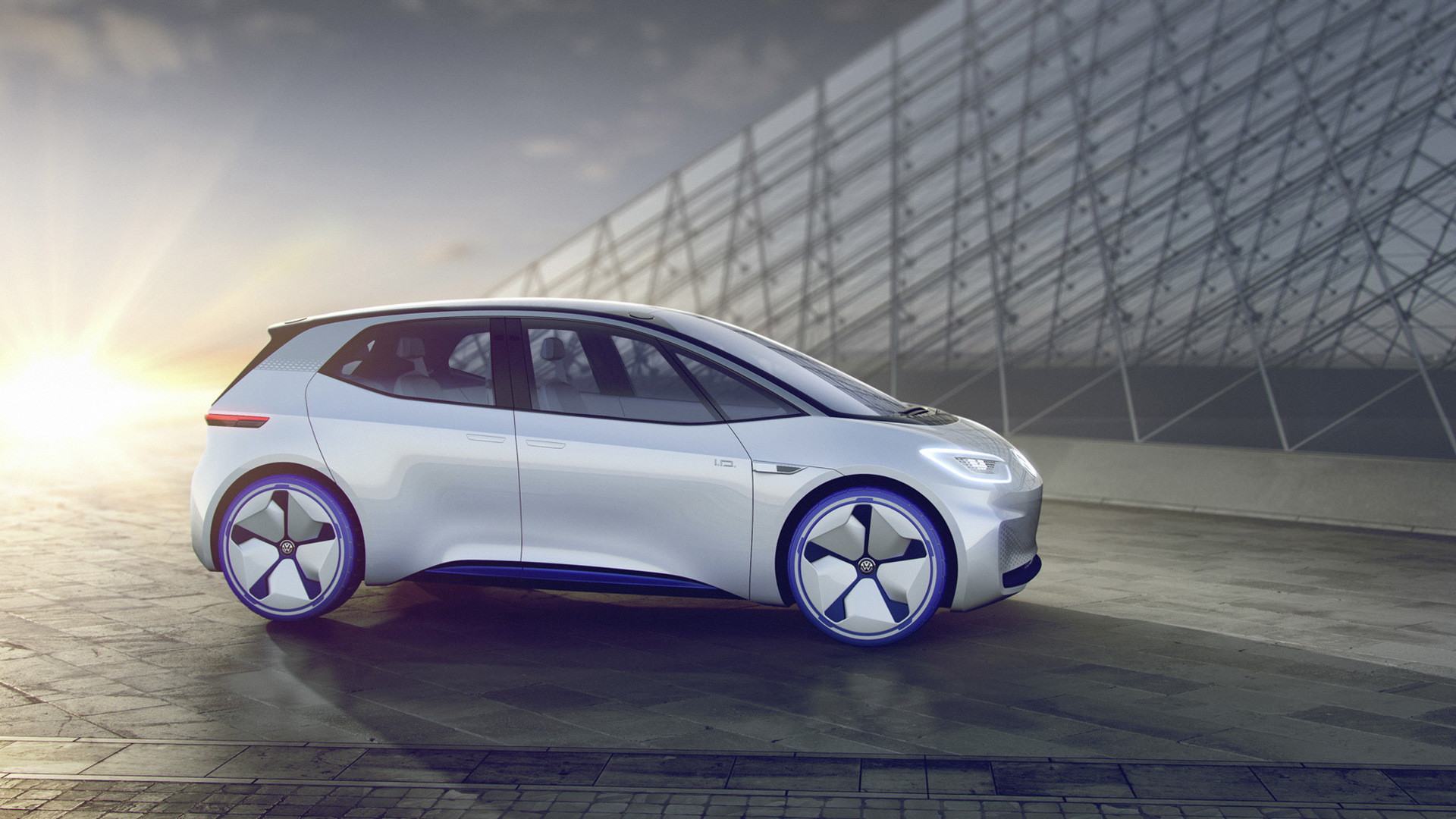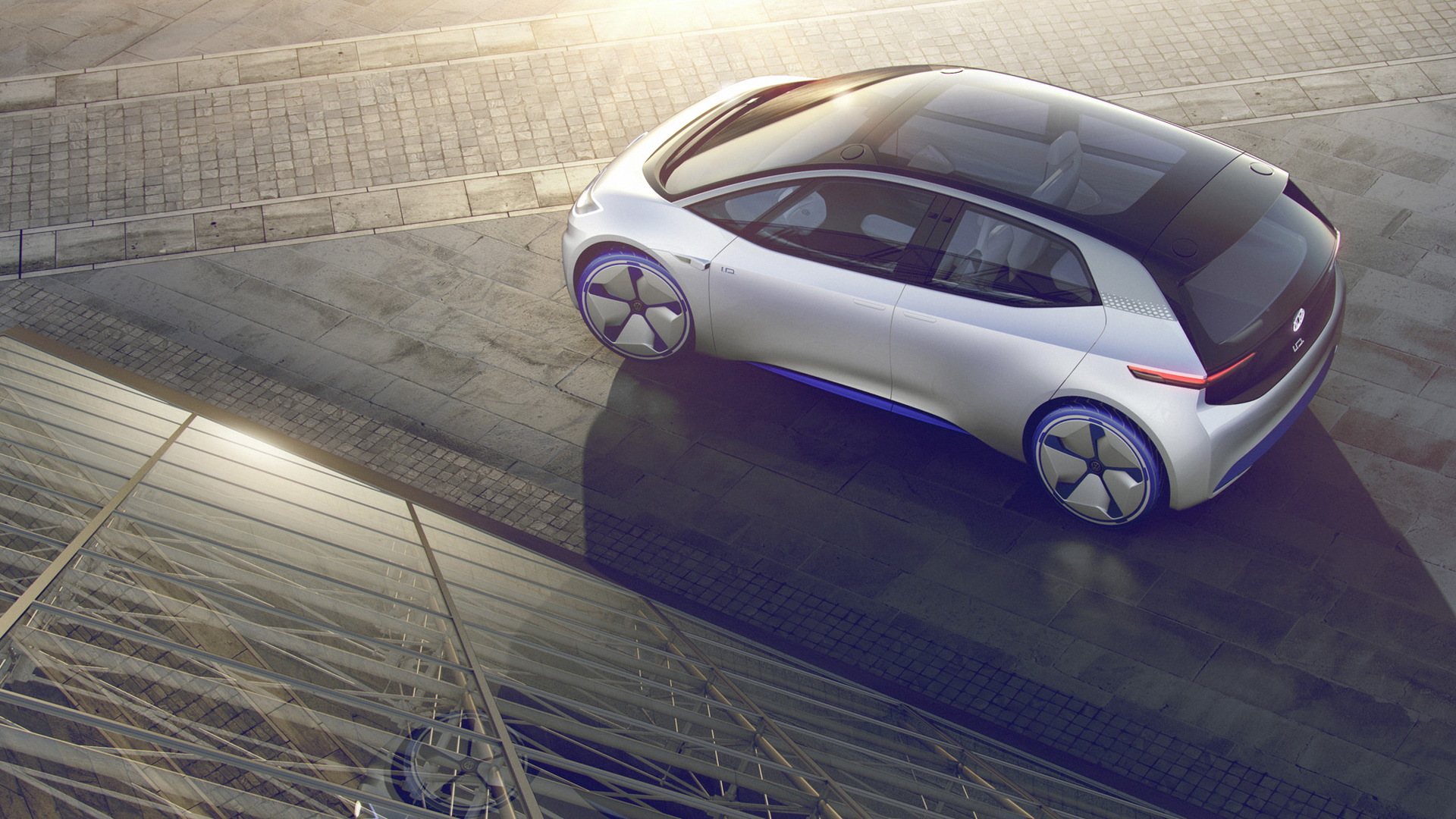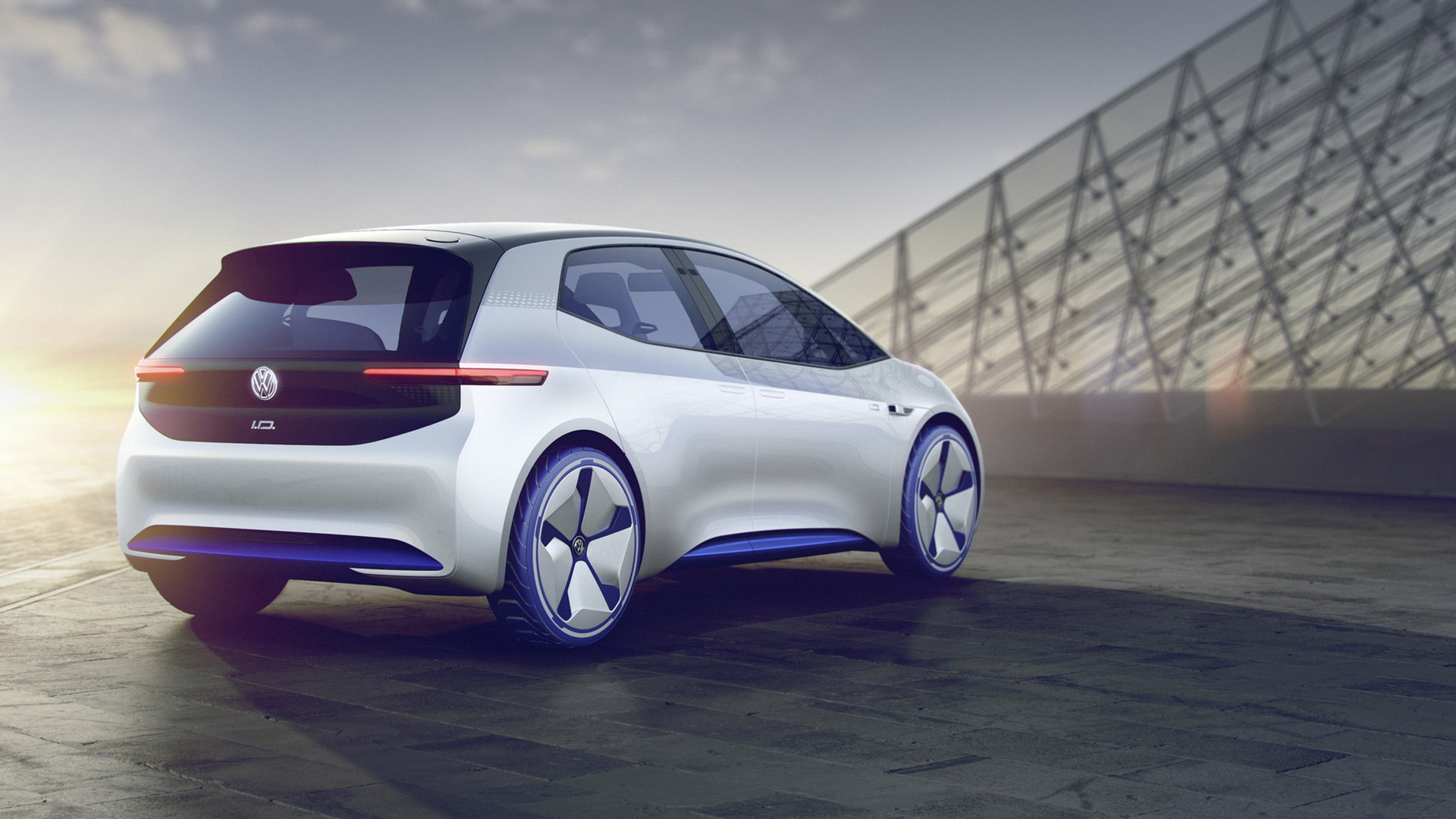This morning, Volkswagen held one of the first press conferences at the Paris Motor Show, unveiling the first of several electric cars from different makers.
Its Volkswagen I.D. Concept is a preview of a high-volume battery-electric hatchback that will hit the market in 2020, priced "par with comparably powerful and well-equipped Golf models," the company said.
And it's one of several vehicles that VW says will take the company toward its goal of selling 1 million electric cars a year by 2025—or about 10 percent of its current global sales.
DON'T MISS: VW shows renderings of ID electric-car concept for Paris Motor Show
Volkswagen released six concept renderings and a handful of details yesterday, and the official reveal of the car didn't provide a huge amount of new information.
It did mention the next generation of the Volkswagen e-Golf as having a range of up to 186 miles (on the European test cycle), which will likely translate to 110 to 130 miles on U.S. EPA range estimates.
That confirms earlier reports that an updated 2018 VW e-Golf will get a boost in battery range to take it over 100 miles of rated range.

Volkswagen I.D. electric car concept, 2016 Paris auto show
But if the next e-Golf is “tomorrow,” VW said, the I.D. Concept represents “the day after tomorrow.”
That means that it will have 400 to 600 kilometers (250 to 375 miles) of range (again on the European cycle)—but will also have to compete with a Chevy Bolt EV, a second-generation Nissan Leaf, possibly a Tesla Model 3, and other mass-priced electric cars on the market well before it.
One interesting detail, however, was that unlike the current Nissan Leaf and the upcoming Chevrolet Bolt EV, the I.D. Concept has its electric motor mounted in the rear, powering the rear wheels—like the BMW i3.
CHECK OUT: Volkswagen Budd-e Concept: 373-Mile, All-Electric Van Signals The Future
The lithium-ion battery pack, for which VW did not specify a capacity, is mounted under the car’s floor.
But putting the 125-kilowatt (168-horsepower) motor in the rear, under the load bay, gives the car’s designers far more flexibility in design, permitting a shorter and lower nose.
It also makes frontal crash protection easier to engineer, by providing a larger crush space without having to accommodate the large and uncrushable metal object that is a front-wheel-drive car’s engine and transmission unit.
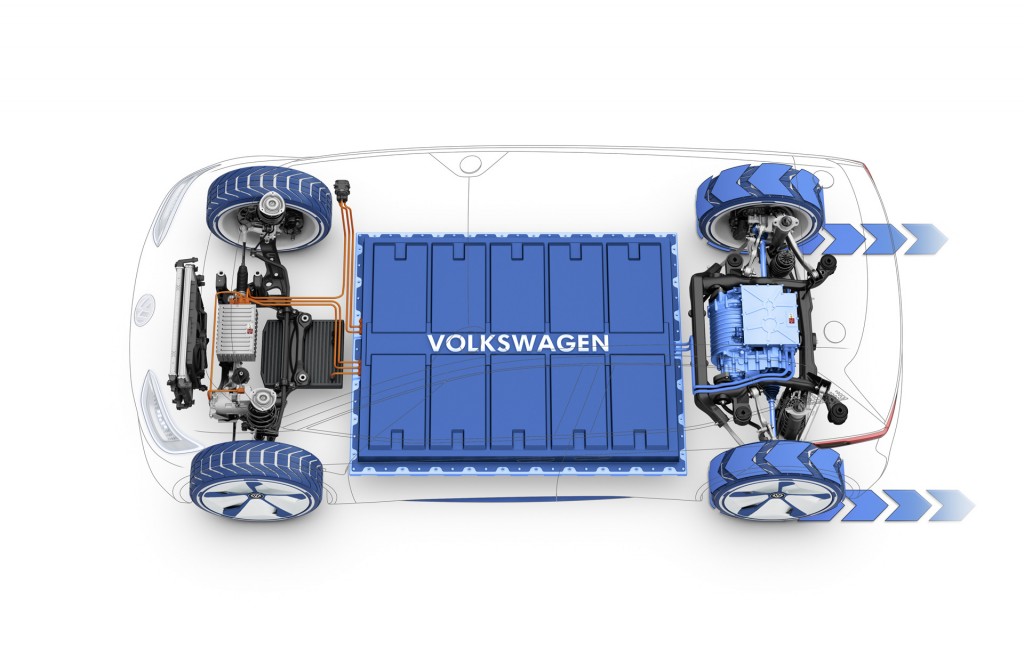
Volkswagen I.D. electric car concept, 2016 Paris auto show
Not having an engine up front also allows for deeper front wheel wells that accommodate a tighter turning circle than comparable front-wheel-drive cars. The I.D. has a turning circle of just 32.5 feet, VW says.
The VW I.D. Concept also gives a preview of a fully automated driving mode that Volkswagen expects to roll out in 2025.
When the car is driving itself, the company says, the steering wheel will retract fully into the dashboard, opening up for more space for the driver to converse with passengers comfortably.
READ THIS: VW's big electric-car pledge: LG Chem, Panasonic possible battery partners
The production version of the I.D. will be the first vehicle built on VW's new MEB modular architecture, designed specifically for electric vehicles.
It is characterized by a long wheelbase with short overhangs, a tight turning circle, a flat battery pack under the floor, and a multi-link rear axle mounted in a subframe.
For continual coverage of all the launches and news from the show, check back regularly with our Paris Motor Show news page.
_______________________________________
